15 Wildlife Photos from 2025 That Will Make History

Photography is not only an art form but also a way to tell stories about life on our planet. One of the leading competitions in this field is Wildlife Photographer of the Year , held annually by London’s Natural History Museum.
In 2025, it celebrates its 61st season: the competition received a record number of photographs – more than 60 thousand from all over the world.
The jury selects entries not only based on execution technique but also on emotional power and the uniqueness of their story. The winners will be announced in October, but in anticipation of the main events, a selection of “worthy mentions” was published on the website.
“The Call of the Rut” by Jamie Smart
Jamie Smart
Every year in Bradgate Park (UK), male red deer gather to compete for mates. Jamie Smart struggled through the tall grass, stretching herself to her full height to get the perfect position to photograph this deer as it raised its head for a mighty roar.
Every year, deer shed their antlers and grow new ones. The number of antlers on this buck’s antlers suggests he’s an experienced buck, likely one who’s competed many times.
Journey to the Edge of the Ice by Bertie Gregory
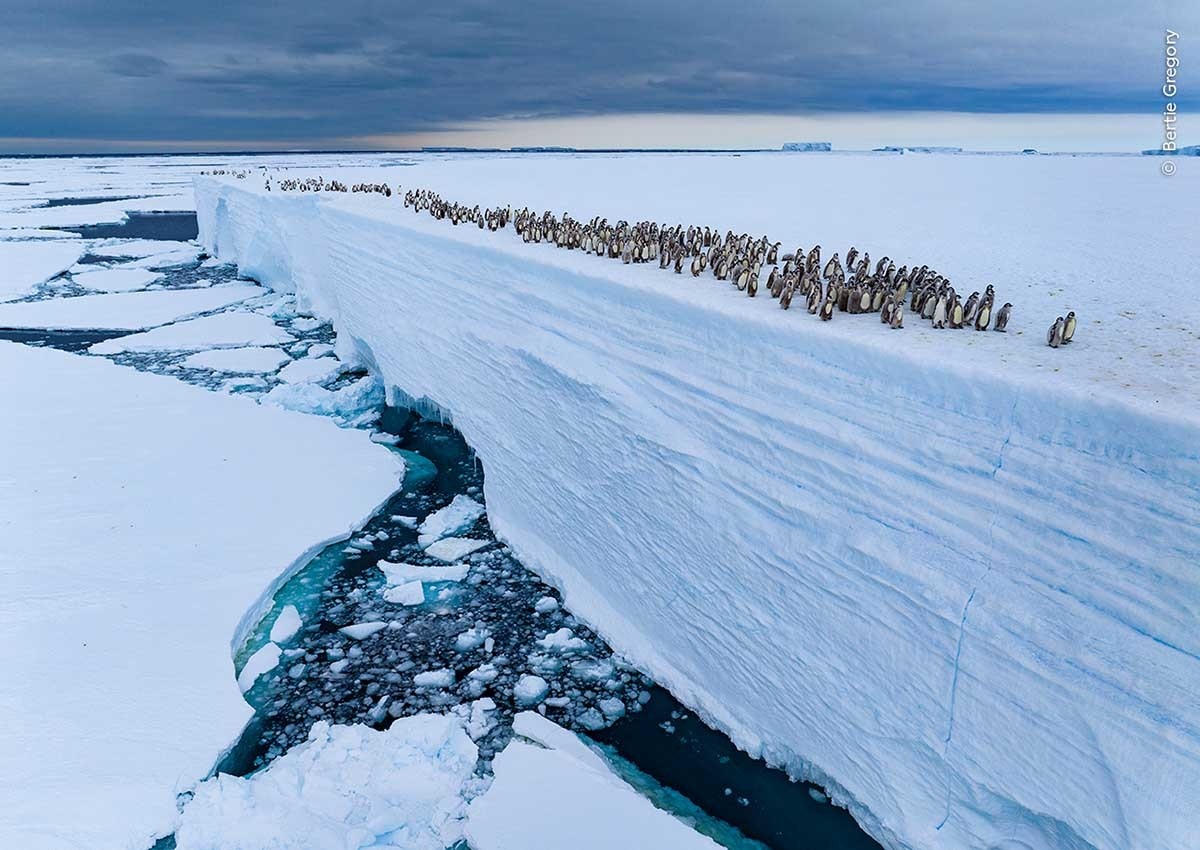
Bertie Gregory
Bertie captured the moment a group of emperor penguin chicks were about to jump from a 15-metre ice cliff into the icy Antarctic ocean.
Every year, penguin chicks make a dangerous, solitary journey from their nesting site to the water’s edge. As Antarctica warms due to the climate crisis, this journey is becoming increasingly perilous.
“Toxic Dump” by Lakshitha Karunarathna
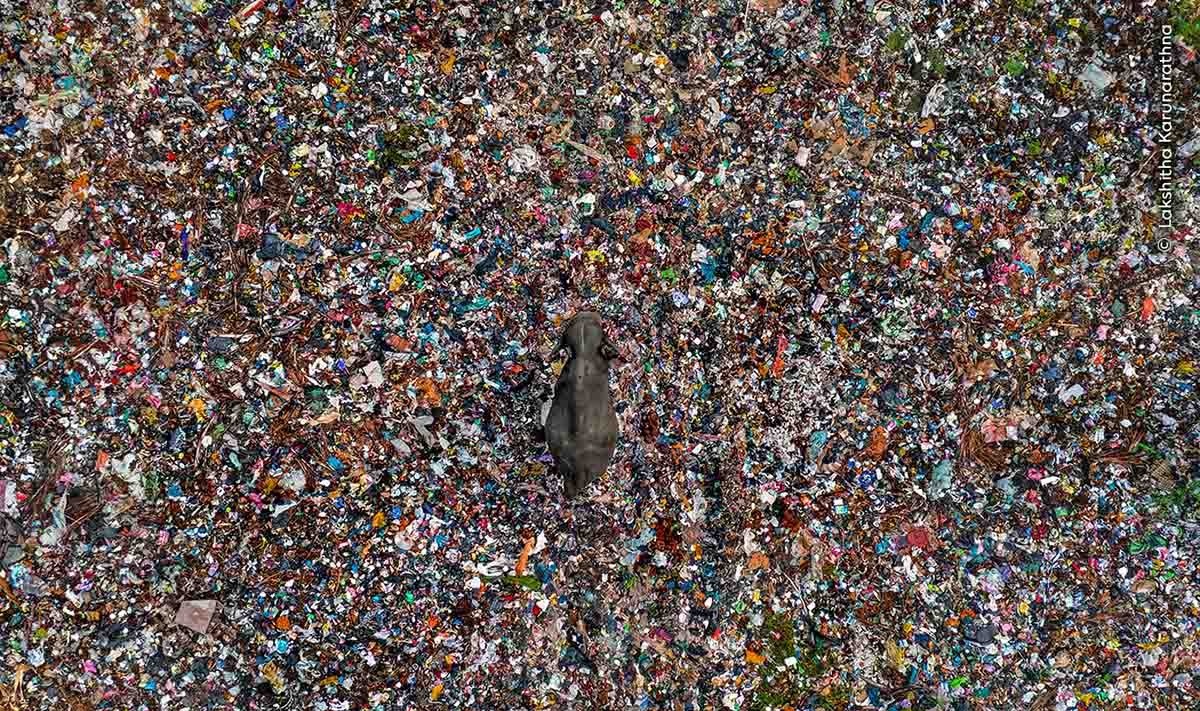
Lakshitha Karunarathna
A lone elephant makes its way through a waste dump in Sri Lanka.
Lakshitha documented the conflict that arises between humans and the approximately 7,500 elephants on the island. Unfortunately, this regularly includes elephants foraging for food among Sri Lanka’s open garbage dumps.
“Pink Pose” by Leana Kuster
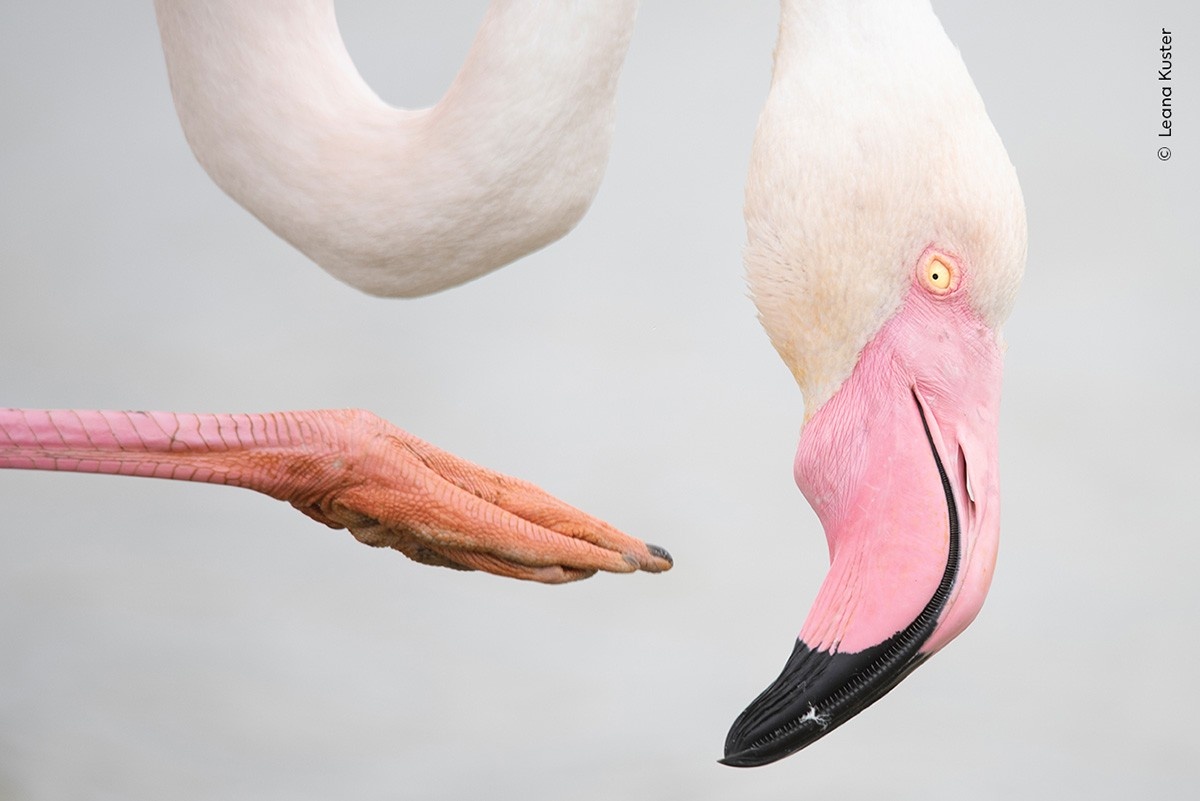
Leana Kuster
The vast wetlands of the Camargue in southern France are home to all kinds of waterfowl, including one of Europe’s most recognisable birds: the greater flamingo.
As Lina watched these long-legged birds move gracefully through the shallow water, she couldn’t help but capture the moment when one of them lifted its long leg to scratch its head.
“Deadly Lesson” by Marina Cano
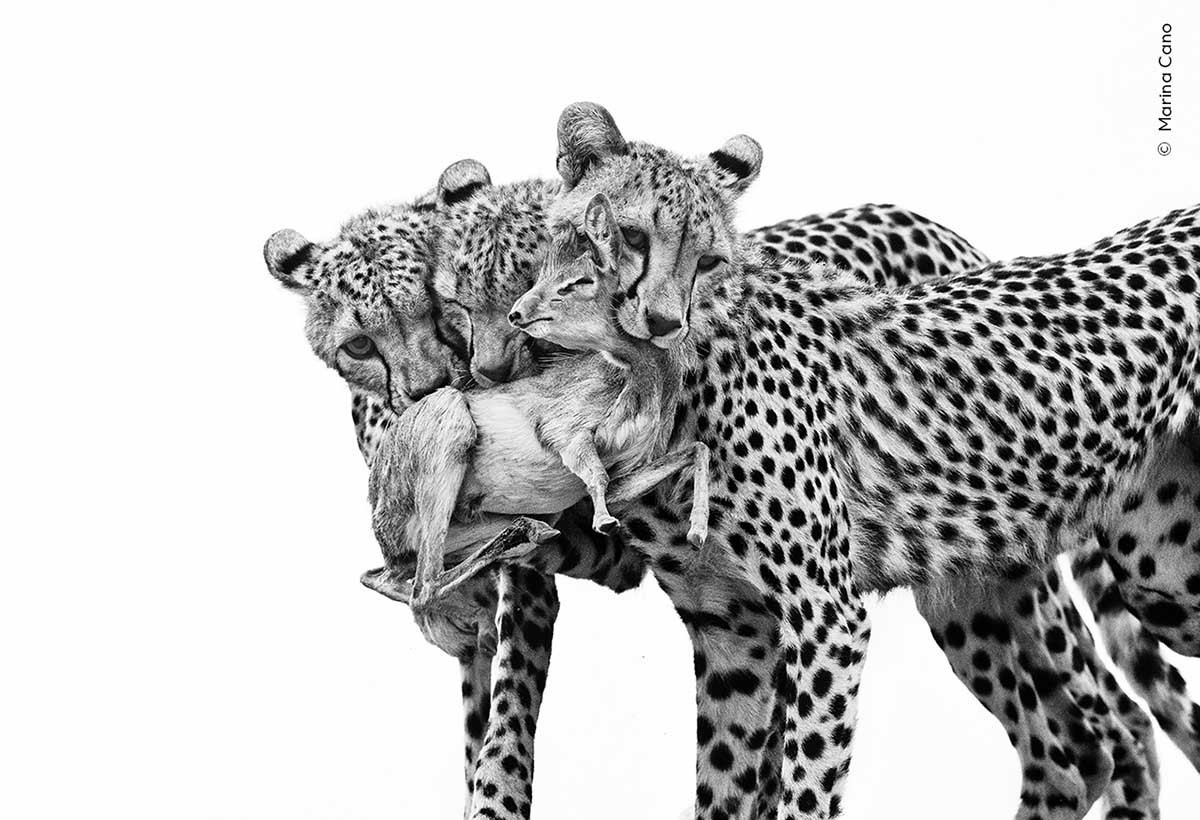
Marina Cano
This striking image reveals the brutal nature of how the world’s fastest land predator learns to survive.
Three young cheetahs were practicing their hunting skills in Kenya’s Samburu National Reserve when one of them caught a hapless dik-dik. Shortly after Marina took this photo, the small animal was killed.
“The Fragile River of Life” by Isaac Szabo

Isaac Szabo
Wrapping his legs around a sunken tree to stay in place, Isaac documented a scene that has played out almost consistently in Florida rivers for about 100 million years.
The gar and its relatives have been around since the time of the dinosaurs, making this moment when a female spawns in crystal clear waters even more special.
“Wake-Up Call” by Gabriella Comi
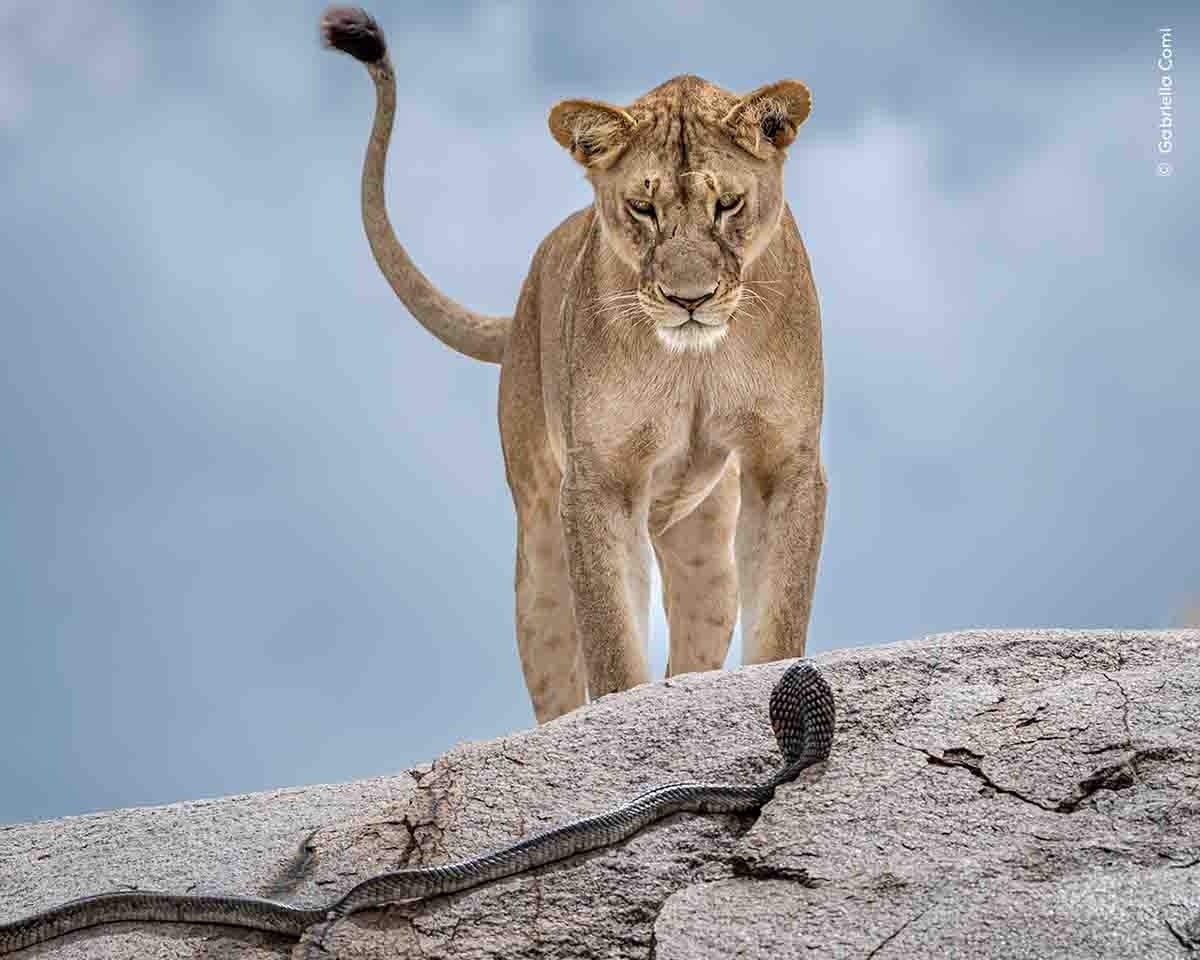
Gabriella Comi
Two of Africa’s most impressive predators come face to face in Serengeti National Park, Tanzania.
The scene unfolded right before Gabriella’s eyes when a pair of sleeping lions were awakened by a cobra slithering across the rocks toward them. Within seconds, one of the cats found herself face to face with the snake, giving Gabriella the perfect shot.
Summer of the Jellyfish by Ralph Pace
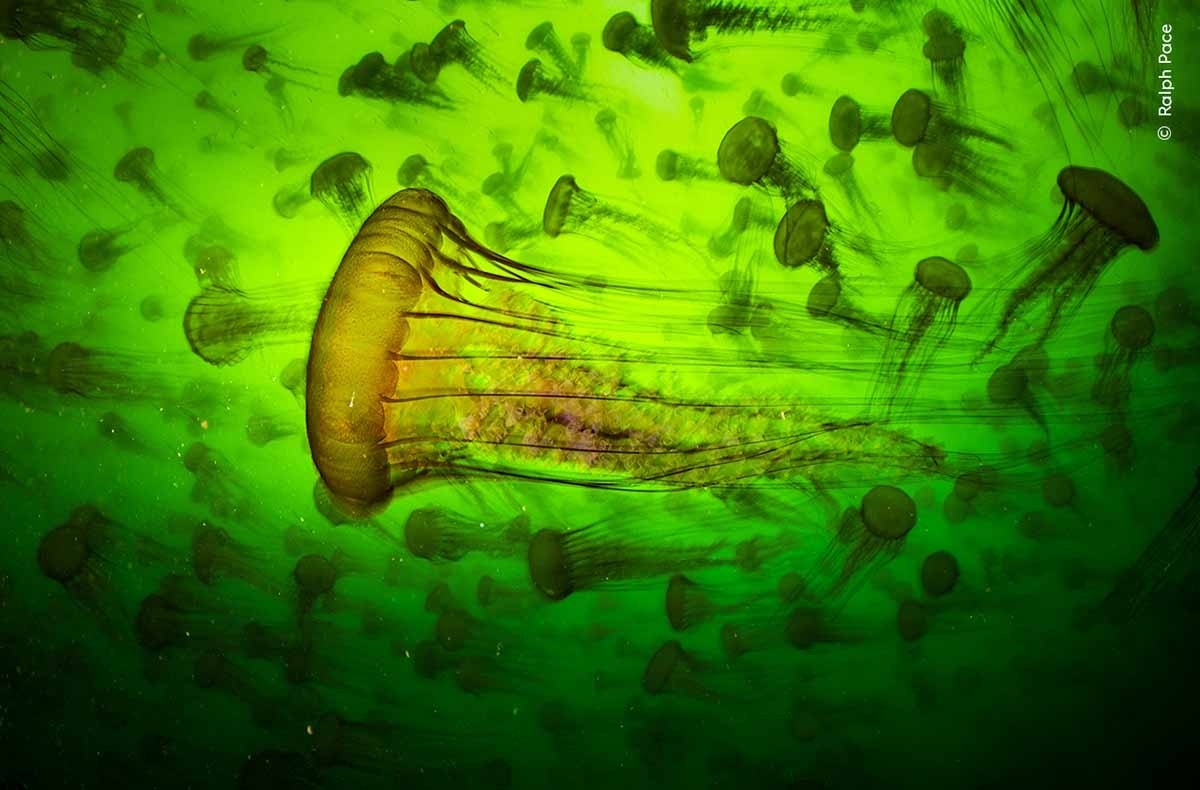
Ralph Pace
Swimming among jellyfish might not seem appealing to many. But for Ralph, it provided the perfect setting for an otherworldly photograph of swarming Pacific sea nettles.
By lubricating every exposed area of skin with Vaseline, Ralph was able to swim among the animals, protected from their stinging tentacles.
“Nature Takes Back Its Place” by Sitaram Raul
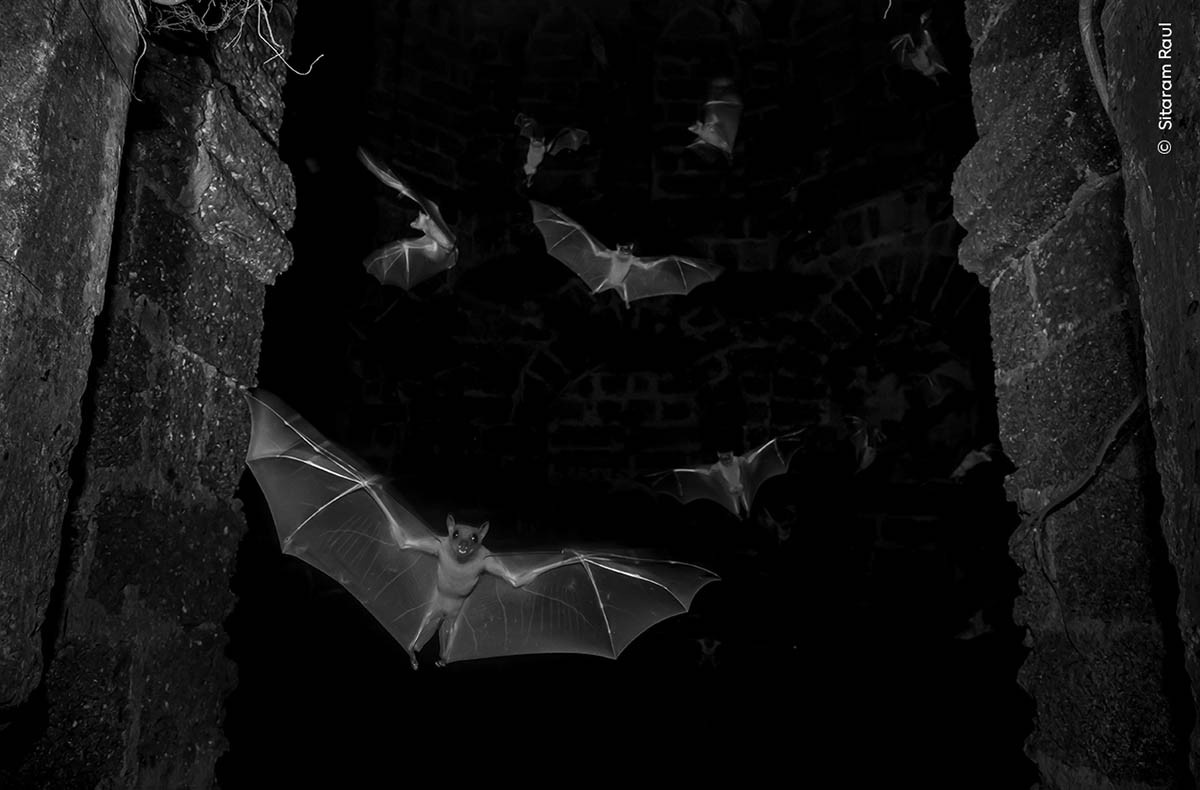
Sitaram Raul
Sitting in complete darkness and feeling the bats flying around, Sitaram aimed his camera and focused it where he hoped the animals would be.
A flash of light illuminates the chaotic flight of fruit bats as they leave their lair in the ruins of a historic monument in Banda, India. No matter how large our urban structures, nature will eventually reclaim them.
Clouds of Gold by Jassen Todorov
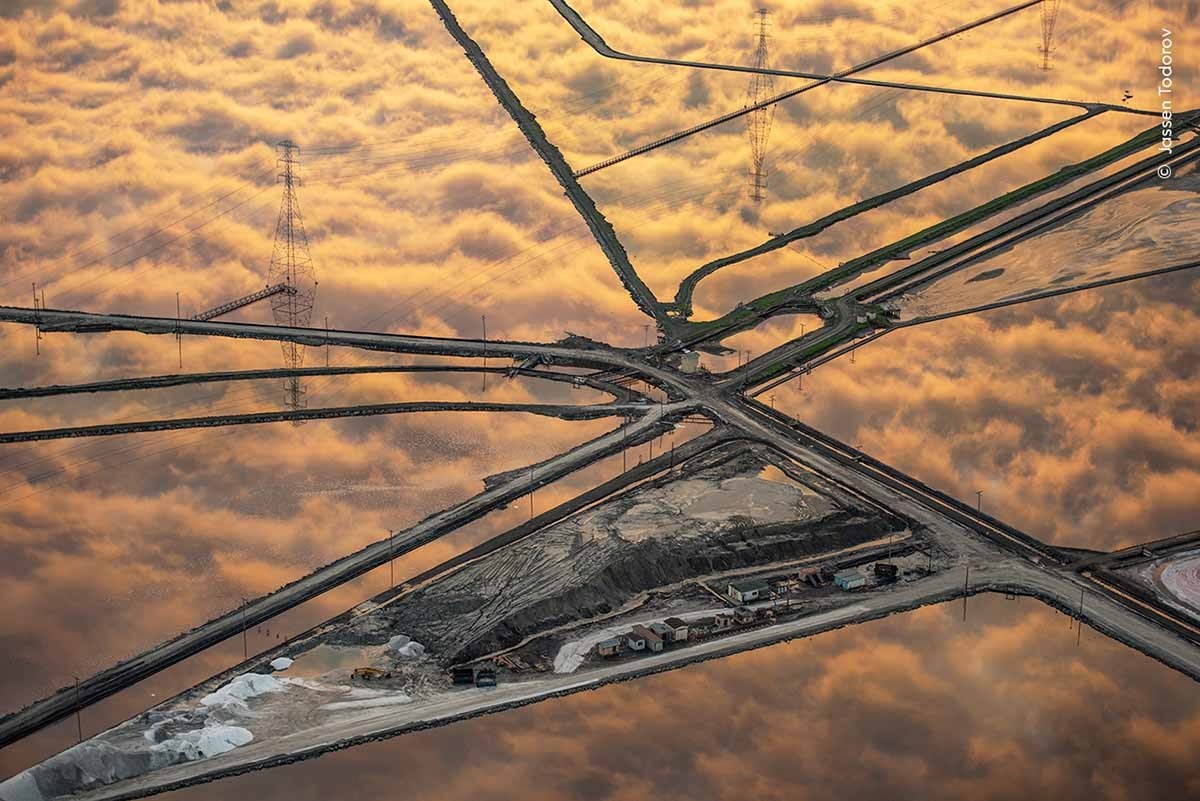
Jassen Todorov
The calm waters of San Francisco’s salt ponds form a crystal-clear mirror, reflecting drifting clouds and golden light.
Salt has been mined in this region since the 1800s. Over the past two decades, conservation projects have restored this tidal environment to its original salt marsh state.
“The Essence of Kamchatka” by Kesshav Vikram
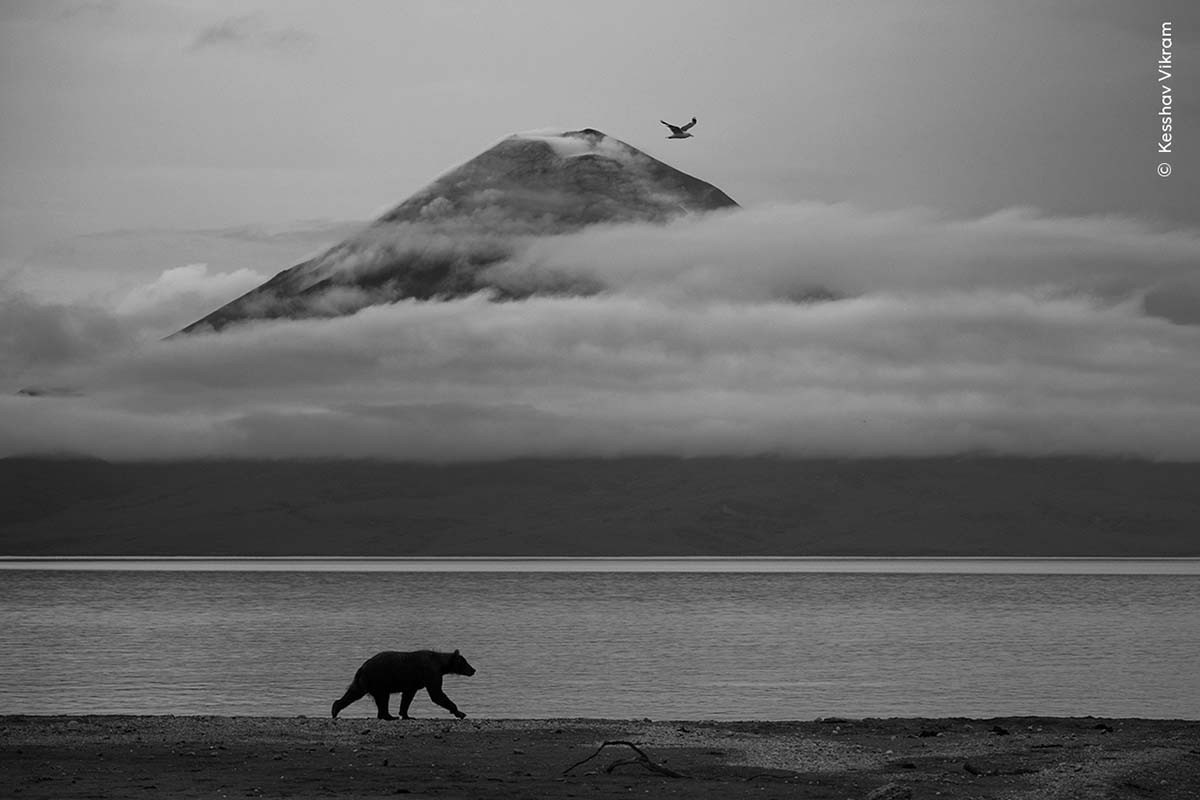
Keshav Vikram (Kesshav Vikram)
With the Ilyinsky volcano rising through the clouds on the Kamchatka Peninsula as a backdrop, a lone brown bear strolls along the shore.
Although the bear appeared lonely on the beach, it was heading to join many others of its species. Every year, the lake’s caldera is a salmon spawning ground, which the bears flock to feast on.
There’s No Place Like Home by Emmanuel Tardy
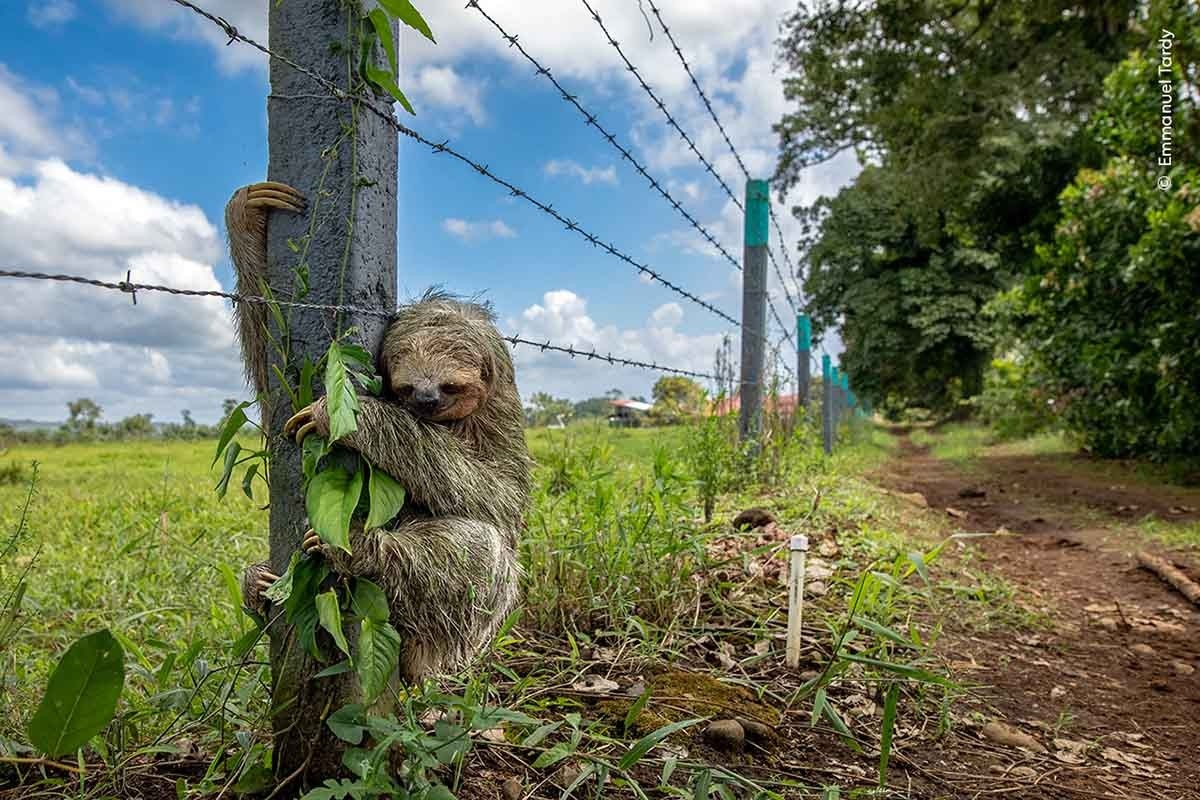
Emmanuel Tardy
Emmanuel waited for the crowd to disperse before taking this photo of a poor, confused brown three-toed sloth. He had just crossed the road and headed toward the first thing that resembled a tree.
Unfortunately, as the sloths’ forests become increasingly fragmented, more and more animals are forced to descend from the safety of trees to navigate. The Costa Rican government is currently working on creating aerial bridges to protect them.
“A Tale of Two Coyotes” by Parham Pourahmad
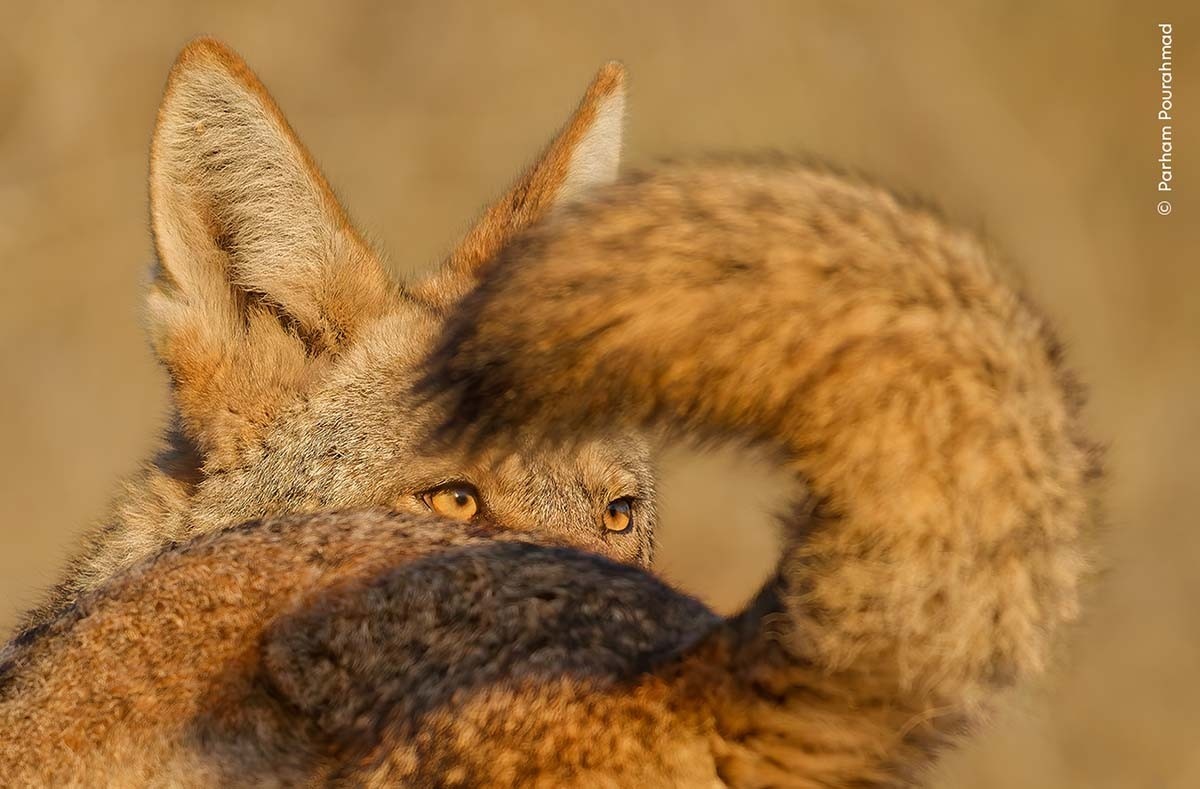
Parham Pourahmad
Don’t be fooled by those wily coyotes, there are actually two of them in this photo taken in Bernal Heights Park in San Francisco.
Following the pair, Parham managed to get the perfect shot, with the brother’s amber eyes framed by the black tip of the sister’s tail.
“Slime Family Portrait” by Kutub Uddin

Qutub Uddin
These perfectly formed mushrooms, looking a bit like blueberries on a stem, caught Qutub’s eye while he was exploring Slindon Wood, UK.
Measuring just a few millimetres in size, mushrooms are actually communities of single-celled, amoeba-like organisms that gather together to find food and reproduce.
“Special Delivery” from Bidyut Kalita
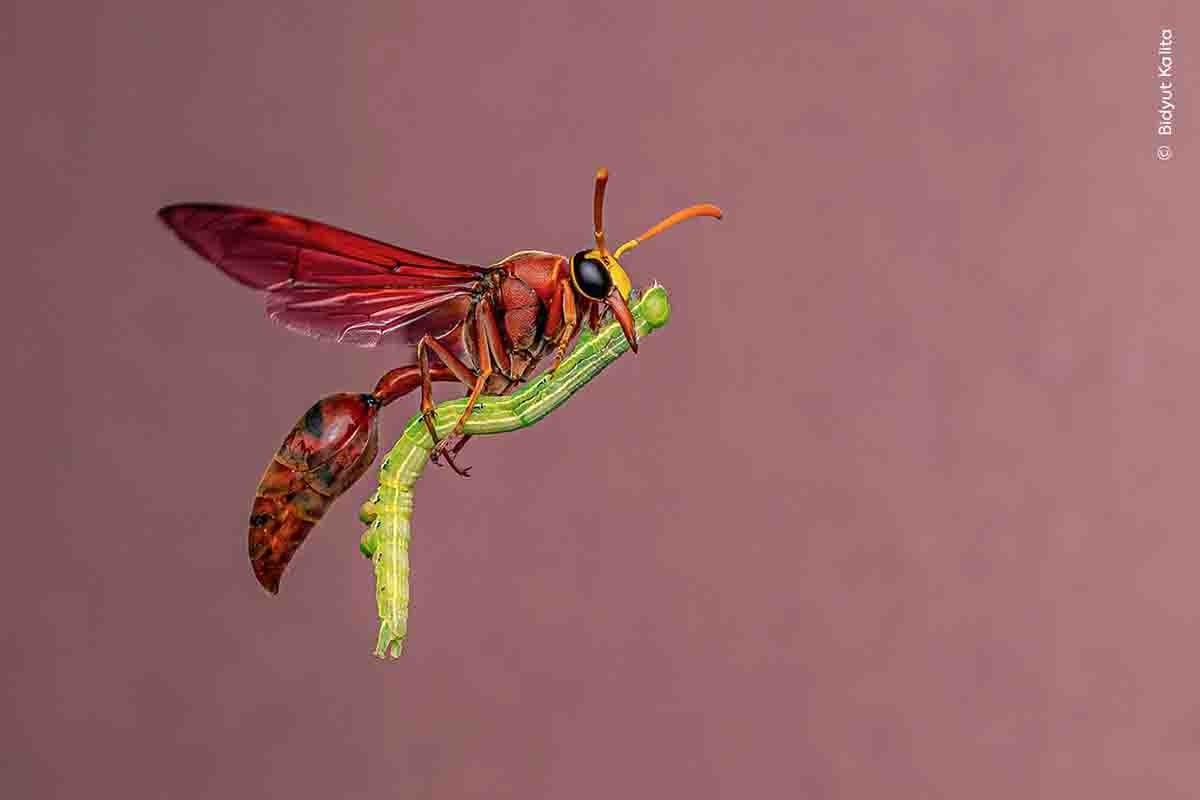
Bidyut Kalita
Potter wasps are known to construct a small chamber before filling it with paralyzed prey for their offspring.
So when Bidyut spotted one of the wasps flying into his home in Goalpar, India, he began preparing to take a photo. By propping the door open to give the wasp full access, he managed to capture the exact moment it returned with a bright green caterpillar clutched between its mouth and legs.
